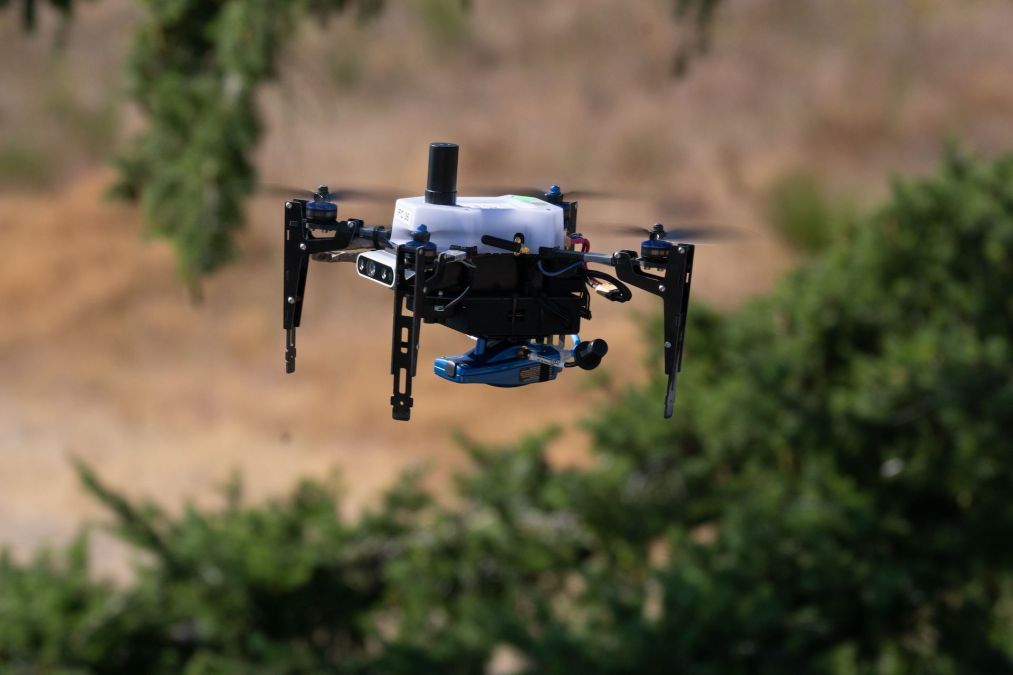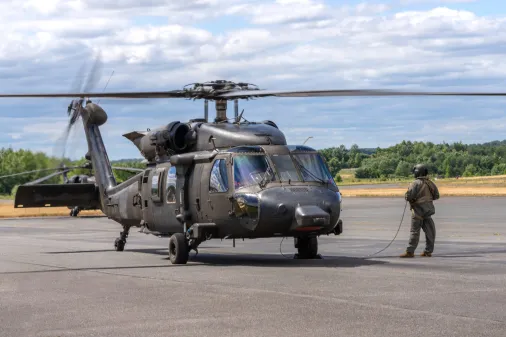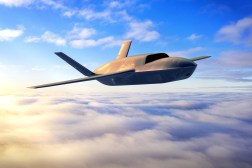Drone swarms with 1,000 unmanned aircraft could be possible within 5 years, DARPA leader says

Within the next five years, it could be possible for the U.S. military to launch swarms of drones consisting of as many as 1,000 unmanned aerial systems, a top official at the Defense Advanced Research Projects Agency told FedScoop.
DARPA been testing this type of technology.
Since 2017, the agency has conducted at least six field experiments at various locations as part of its Offensive Swarm-Enabled Tactics (OFFSET) program. One of those tests included about 100 drones, Kenneth Plaks, acting director of the agency’s Strategic Technology Office, said Tuesday at the Sea-Air-Space conference at National Harbor, Maryland.
“It looked like the jukebox of the Apocalypse,” he said during a panel discussion. “But even that really doesn’t scale to the numbers we’re talking about” launching in the future.
Another DARPA initiative, the System-of-Systems Enhanced Small Unit (SESU) program, deployed a drone swarm against mockup targets at Yuma Proving Ground, Arizona.
“They autonomously divvied up the airspace, found a target, radioed home. And then we launched another drone … with an autonomous seeker” that leveraged technology developed for the Seeker Cost Transformation (SECTR) program, he said.
That drone then navigated without GPS, using visual references on the ground to follow the proper flight path. It autonomously located the designated target, selected the aimpoint, and hit the target within a foot of that aimpoint, according to Plaks.
He envisions a scenario in which 1,000 drones could be part of a swarm.
“By having 1,000 different things that can hit a target, as a defender what do you defend against?” he said. “If you try to defend all of them, you’re going to spend all your resources on the first volley and have nothing left. So that is a way of imposing complexity and kind of a death-of-a-thousand-cuts type of a scenario upon the nation’s adversaries.”
However, there are challenges involved in that type of operation.
“Command and control of all these vehicles is important,” he said.
For example, launching and recovering massive numbers of UAS is “really hard,” Plaks said, noting that launching just a few dozen manned planes during Air Force exercises is time-consuming.
“It takes an hour just to get everybody marshaled and on and off the runway. Now how do you launch and control 1,000 [unmanned] aircraft?” he said.
However, the challenges involved in deploying that large of a swarm aren’t insurmountable, according to Plaks.
“It’s certainly doable, I think, within the next five years. I don’t see any technical impediments, especially if they’re highly autonomous” UAS, he told FedScoop.
“You’re not going to do this with like a Predator-style drone where you’re actually hand-flying the drone,” he explained. “The real question is … do you have the autonomy to actually accomplish the mission?”
A human will still need to be somewhere in the decision-making loop when it comes to missions that involve launching weapons, Plaks asserted.
“ISR is one thing and that’s kind of easy,” he said, referring to intelligence, surveillance and reconnaissance. “If you’re going to use lethal force, there has to be a human being in the loop, right. And so that’s the real trick, you know, how do I get enough information to a remote human being to make a decision and then the tell the drone to deal with something.”






